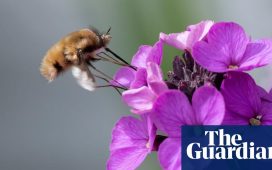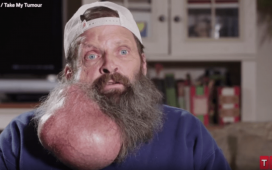Michael Tonkovich spent the week after Thanksgiving at deer processors around Ohio, swabbing the carcasses to test for Sars-CoV-2, the virus that can cause Covid-19.
When he explained his goal to hunters, a common reaction was: help yourself. And perhaps you can butcher it too, they joked.
Whether or not the hunters saw the utility of a study testing deer for the Covid-causing virus, Tonkovich, deer program administrator for the Ohio department of natural resources division of wildlife, certainly did. White-tailed deer infected with the virus have been found in 15 states, according to the US Department of Agriculture.
Scientists working in Staten Island, New York, also recently discovered the highly contagious Omicron variant circulating among the species for the first time.
Although Covid-19 itself has not been found in deer, how serious the presence of the virus in deer could be for humans remains unclear. Whether anything could even be done to limit its spread is equally uncertain.
“If they are getting it through sewage or garbage or runoff … there is likely nothing we can do about that,” said Tonkovich.
Scientists nevertheless think the surveillance is urgent. Deer could act as large reservoirs for the virus, and serve as a source for new variants that could then spill over into humans. If you don’t know where the virus is, they reason, the already difficult task of managing it becomes impossible.
“When you have a population as large and as close as it is to humans” as white-tailed deer that serves as a reservoir for the virus, “it just makes sense to keep an eye on it”, said Tonkovich.
The study, which has not yet been peer reviewed, illustrates the need for “more targeted surveillance to better understand the circulation of Sars-CoV-2 in wild animals,” said Suresh Kuchipudi, a veterinary microbiologist at Penn State University who led the Staten Island research team.
“Before we can conclude whether or not something can be done, we need to define the problem first.”
Researchers also recently found that pet hamsters and mink were capable of catching the virus from humans – and spreading it to them.
While there is no evidence that deer are capable of infecting humans with the virus, they could infect other animals – and because they are in the wild, rather than in captivity like hamsters and mink, that risk “is much more significant”, said Kuchipudi.
But controlling the spread of a virus among animals is often difficult or impossible, said Sarah Olson, an epidemiologist at the Wildlife Conservation Society.
She points to how Covid-19 has been able to spread among humans despite visits to health providers and tools such as vaccines. She also cited the devastating impact of diseases such as white-nose syndrome, which, despite scientists’ protection efforts, has killed more than 90% of three North America bat species, according to a study in the journal Conservation Biology.
As for addressing the spread of the virus among deer, Olson does not think that applying our standard responses to Covid in people – such as trying to vaccinate them – is realistic. Instead, the research is “a call to redouble our efforts, to pay attention to wildlife health, to understand what is going on in these spaces that are currently kind of black boxes”, Olson said.
One goal for scientists is to learn whether the virus spread from human to deer via wastewater, which would then allow public health officials to consider: “How are we protecting waste sites to prevent spread of diseases from people to wildlife?” Olson said.
Prevention efforts could get a boost after the House on 4 February passed the America Competes Act, which calls for the US government to work with other countries and NGOs to close commercial wildlife markets – where some scientists think the pandemic originated – and to end the trade of terrestrial wildlife for human consumption, aiming instead to reduce the demand for wildlife as food. But only one Republican voted in favor of the bill, and it is unclear if it will die in the Senate.
In the meantime, Kuchipudi said uncertainty about the spread of the virus among deer and other animals means that talk of the end of the pandemic is premature.
“The Omicron variant could continue to spill over into animals and evolve, and therefore we can’t let our guard down and must continue to follow the precautions,” such as masking and social distancing, he said.
The US Centers for Disease Control and Prevention (CDC) continues to emphasize that the risk of catching Covid from animals is very low. Jennifer Ramsey, wildlife veterinarian with Montana Fish, Wildlife and Parks, fields calls from hunters about it, whom she urges to wear gloves and use good hygiene when handling carcasses.
Indeed, for many hunters, talk of a potential virus in deer is nothing new. The CDC has long urged people hunting in areas with chronic wasting disease (CWD) to test the deer or elk before eating the meat, but there is no evidence of infection in people. The same appears clear with Covid, at least for now.
“It doesn’t seem like it’s anything to panic about – but just something to be aware of,” said Ramsey.













